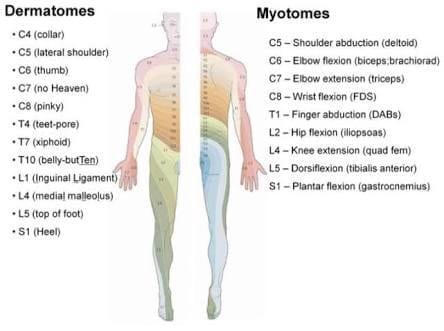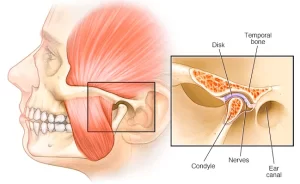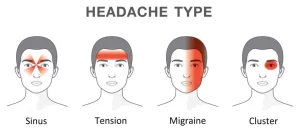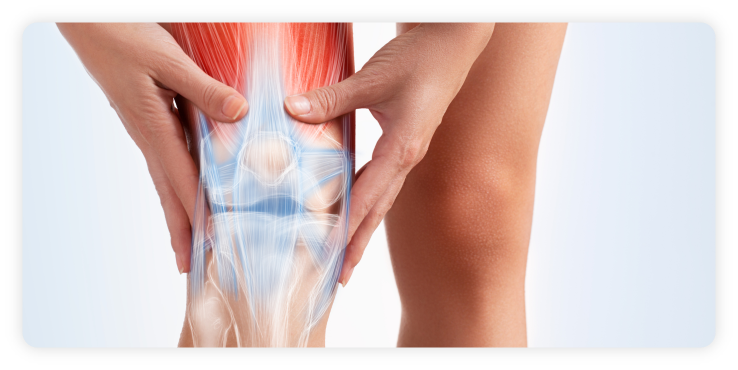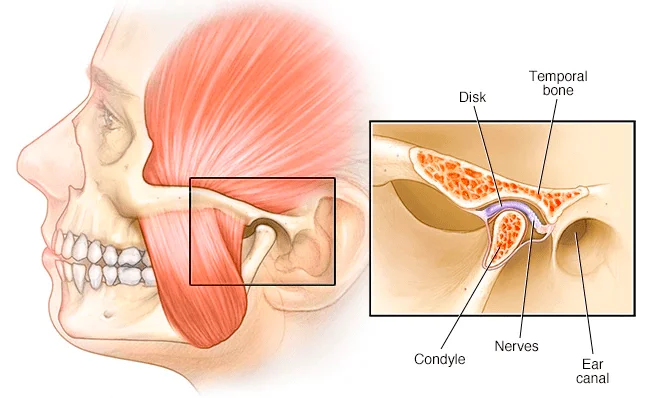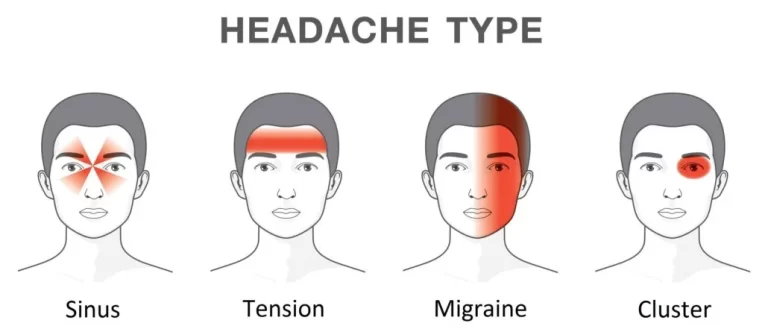Why are Myotomes?
Myotome refers to the muscles served by a spinal nerve root. Therefore, myotomes are a set of muscles innervated by a specific single spinal nerve. When the spinal nerve root or the spinal cord from which the spinal nerve root originate is damaged, the muscles supplied by these nerves (if the lesion is more extended) can become weak if the lesion is partial or paralysed if the lesion is completed. Myotomes are especially useful to determine where damage to the spinal nerve root has occurred.
Most muscles in the limbs receive innervation from more than one spinal nerve root and are comprised of multiple myotomes. For example, the biceps muscle flexes the elbow. It is innervated by the musculocutaneous nerve, which originates from the spinal nerve roots of the cervical vertebrae 5, 6, and 7. All three of these spinal nerve roots can be said to be associated with elbow flexion.
There are 31 spinal nerves. Each vertebrae has a spinal nerve. The nerves are categorised by the vertebra which houses them. There are 8 cervical nerves, 12 thoracic nerves, 5 lumbar nerves, 5 sacral nerves, and 1 coccygeal nerve.
The list below details which movement(s) has the strongest association with each myotome:
C5 – shoulder abduction, C6 – Elbow Flexion Wrist extension, C7 – Elbow extension, C8 – Finger flexion, T1 – Finger abduction, L2 – Hip flexion, L3 – Knee extension, L4 – Ankle Upward Movement, L5 – Great Toe extension, S1 – Ankle Downward Movement
Technique application: Problem lifting your foot or “foot drop” can be a sign of concern in the lower part of your spine (L4-S3). To make a diagnosis, a power test will be done on the muscles to resist some movements. On the basis of which muscles are weak and how severe the weakness is then it will possible to evaluate the location and severity of the lesion.
